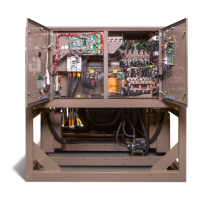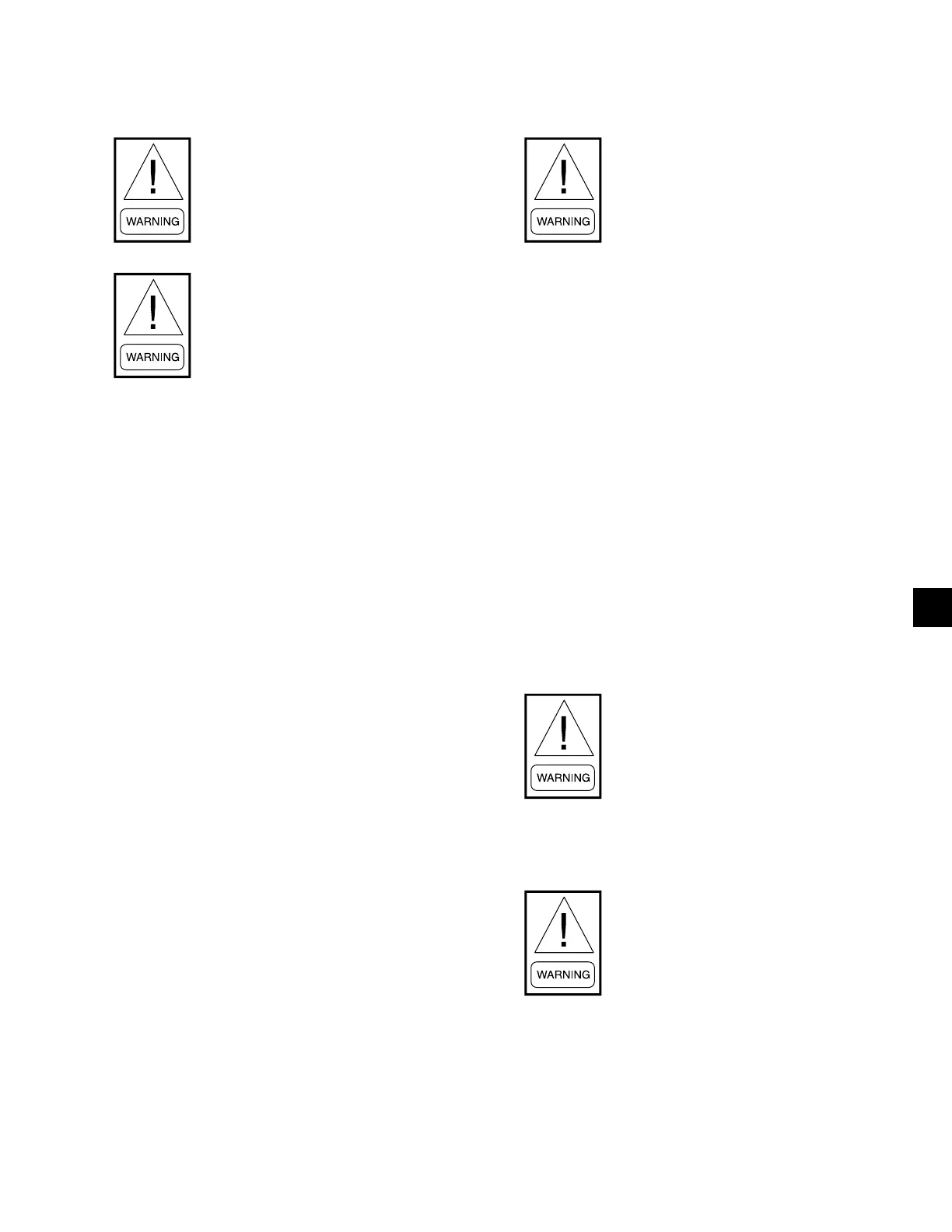JOHNSON CONTROLS
189
Form 201.47-ICOM1
Issue date: 17/11/2022
10
Section 10 - Decommissioning, dismantling, and disposal
Never release refrigerant to the atmo-
sphere when emptying the refrigerating
circuits. Suitable retrieval equipment
must be used. If reclaimed refrigerant
cannot be reused. It must be returned to
the manufacturer.
Never discard used compressor oil, as it
contains refrigerant in solution. Return
used oil to the oil manufacturer.
Never discard used compressor oil, as it contains re-
frigerant in the solution. Return used oil to the oil man-
ufacturer.
Unless otherwise indicated, the operations described
as follows can be performed by any properly trained
maintenance technician.
General
Isolate all sources of electrical supply to the unit in-
cluding any control system supplies switched by the
unit. Ensure that all points of isolation are secured in
the OFF position. The supply cables may then be dis-
connected and removed. For connection points See
Section 4 - Installation.
Remove all refrigerant from each system of the unit
into a suitable container using a refrigerant reclaim or
recovery unit. This refrigerant may then be re-used, if
appropriate, or returned to the manufacturer for dis-
posal. Under no circumstances should refrigerant be
vented to atmosphere. Drain the refrigerant oil from
each system into a suitable container and dispose of
according to local laws and regulations governing the
disposal of oily wastes. Any spilt oil must be mopped
up and disposed of as mentioned previously in this sec-
tion.
Isolate the unit heat exchanger from the external wa-
ter systems and drain the heat exchanger section of the
system. If no isolation valves are installed it may be
necessary to drain the complete system.
If glycol or similar solutions have been
used in the water system, or chemical
additives are contained, the solution
MUST be disposed of in a suitable and
safe manner. Under NO circumstances
should any system containing glycol or
similar solutions be drained directly into
domestic waste or natural water systems.
After draining, the water pipework can be disconnect-
ed and removed.
Packaged units can generally be removed in one piece
after disconnection as previously mentioned in this sec-
tion. Any fixing down bolts must be removed and then
the unit should be lifted from position using the points
provided and equipment of adequate lifting capacity.
See Section 4 - Installation for unit installation instruc-
tions, Section 9 - Maintenance for unit weights and Sec-
tion 3 - Rigging, handling, and storage for handling.
Units that cannot be removed in one piece after discon-
nection as previously mentioned in this section must
be dismantled in position. Special care must be taken
regarding the weight and handling of each component.
Where possible units should be dismantled in the re-
verse order of installation.
Residual refrigerant oil and glycol or
similar solutions may remain in some
parts of the system. These should be
mopped up and disposed of as previously
described in this section.
It is important to ensure that whilst components are be-
ing removed the remaining parts are supported in a safe
manner.
Only use lifting equipment of adequate
capacity.
After removal from position the unit parts may be dis-
posed of according to local laws and regulations.

